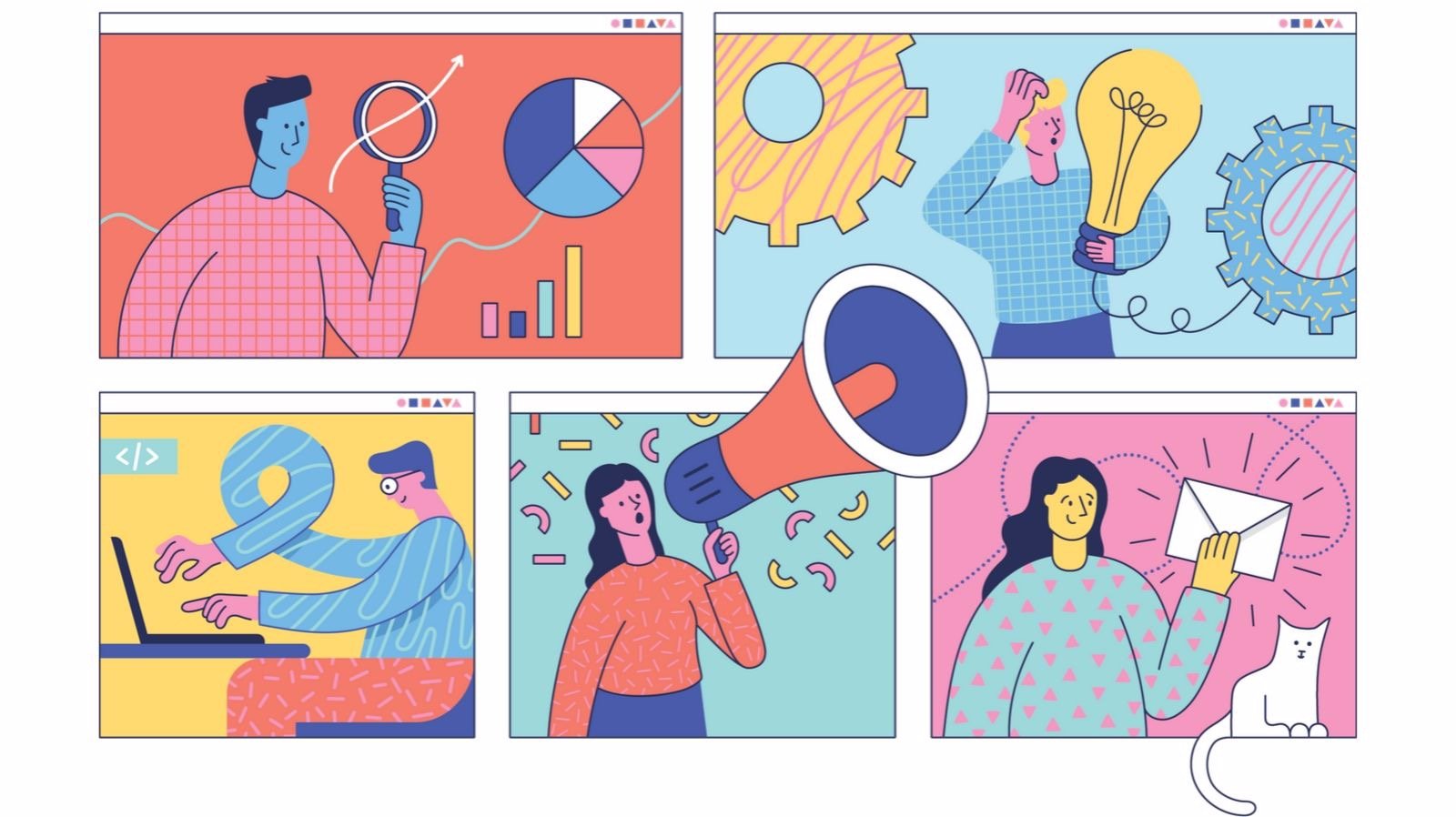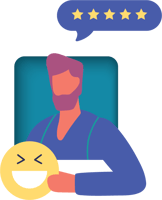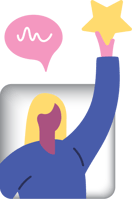
Table of Contents
- What is customer retention?
- Challenges for brands to retain customers
- How to measure your customer retention rate
- Customer loyalty strategies
You’d think any marketer would jump at the chance of a strategy that costs 25 times less while providing twice the conversion. The fact is, it’s much more economical and profitable to keep loyal customers, yet businesses are obsessed with attracting new ones.

What is customer retention?
Customer retention is a strategy applied by a brand or company to hold onto its buyers for a given period of time.
In a customer retention plan the goal is to keep a buyer or user for as long as possible or for an optimal period. Therefore, it differs from the acquisition of new customers and the search for potential leads, but is almost more important than these.
Any customer who has already purchased from your brand even once, can become a target for retention and while this may seem like an intrusive tactic that will tire your customer, it's not.
You'll need to invest much less money and your results may be even better than expected, since everyone’s looking for a brand they can trust.
→ This may interest you: Customer loyalty strategies in omnichannel commerce
Some figures about customer retention
- You're 40% more likely to sell to a past customer than to gain a new one.
- Loyal customers spend up to 30% more than new leads.
- The probability of successfully selling to a past customer is almost 70%, while sales success among new leads ranges from 5 to 20%.
- Loyal customers are 50% more willing to try a new product of yours, than would new customers.
How to build customer loyalty
In the cycle for keeping any customer three key phases can be distinguished:
- Attracting your customer: Obviously, the first step is to attract the attention of your potential customer. Anticipating their concerns and then focusing on these is the best approach: we’ll look at that topic below.
- Guiding your customer: Once a customer shows interest, you’ll have to accompany them up till their first transaction.
- Growing with your customer: After getting your customer to buy your products or use your services, you should focus your efforts on keeping their initial attention. If you do this well, the customer could become a new ambassador for your brand.
→ This may interest you: The new consumer cycle: from coolhunters to direct interactions

Challenges for brands to retain customers
Consumer trust is eroding
Strangely enough, in this era of digital media saturation, rather than becoming better informed, users are feeling less well informed and actually confused as to the reliability of their information sources.
Buyers continue to distrust brands and their advertising messages, so the most common ways decisions are made about purchasing are still:
- Word of mouth
- Recommendations by other shoppers
- Articles in the media
- Analysis reports and reviews
- Review and independent sources websites
Sales agents and advertising are some of the ways that least inspire trust in customers deciding on a brand or product. This does not mean that a business’s marketing efforts are useless, but rather it reveals the need to build an initial basis of trust.
- 81% of buyers follow the advice of people they know.
- 65% of customers don’t trust official press releases.
- 69% of users do not trust ads.
- 71% of consumers don’t trust social media sponsorship.
After all, is that influencer drinking San Pellegrino because she really likes it, or just because she gets a tidy sum in return?
→ This may interest you: How to sell products and position your brand on Instagram
Customers are becoming more impatient
Seeking to dispel their doubts and mistrust by trawling through brands and products is a tedious process for the user. Consumers nowadays demand an immediate response, which the majority define as 30 minutes at most.
In this respect, good customer service and a rich product content are essential for retaining your buyers, as we will see below.
Customer acquisition is becoming more complex
Of course, you can't retain a customer if you haven't managed to attract him in the first place.
And attracting customers is becoming more and more problematic.
Marketing as a means to get organic traffic and positioning has become more expensive in recent times, while to stay in the Google spotlight you’ll need to add ever more content optimization tasks such as snippets and the expandable “People Also Ask” boxes.
In addition, sales teams face more challenges in interacting with customers, as there are more departments and legal aspects to slow down the process.
→ This may interest you: How to improve customer satisfaction
How to measure your customer retention rate
The Customer Retention Rate (CRR) measures the percentage of customers your company has retained over a given time period.
The simple formula for calculating your CRR is as follows:
Where you have
- The number of customers at the start of that period (S)
- The number of customers at the end of that period (E)
- The number of new customers during that period (N)
The Formula is: CRR = [(E-N)/S] x100
Other metrics that can help you measure key performance indicators (KPIs) related to customer retention are:
- The 30-day retention curve
- Customer lifetime value (CLV)
- Conversion rate
Although you’d think the ideal buyer retention period would be for life, we know that in an increasingly competitive market, saturated with diverse stimuli, it’s difficult to achieve this.
You have to be realistic. Daily sales percentages aren’t consistent, the number of customers your business can keep is finite, and your retention rate depends on:
- Your goals. A brand of shoes that can accompany a customer throughout their life is not the same as students’ software that can only be of use during university years).
- The right strategies for each type of business.
- The growth rate variables (depending on what stage your business is at, the state of the market, the time of year and its relevance to your sales niche...).
→ This may interest you: KPIs you should take into account in ecommerce

Customer loyalty strategies
Analyze your purchase order cycle
To improve understanding of your customers and how they arrive at your brand, your sales and marketing teams need to work side by side, sharing information.
Your sales department can provide very useful data on profiles of the average interested customer, helping to draw conclusions on how best to approach them, where to locate them, and which competing brands might be of interest to them.
Now analyze which factors influence the buying decision of the customers you've already gained, and which journey of discovery most often serves to attract them to your brand, in order to improve your success and retention ratio.
Provide good product content
First impressions count... as well as all those that follow.
Being able to find product information quickly is a big saving of time and effort for shoppers. If you give them good product content (descriptions, technical data, images, videos, downloadable materials...), enriched so that it’s easy to locate in search engines and marketplaces, you will be earning points in a vital aspect that many brands still don’t pay enough attention to.

Make a difference and build customer loyalty by giving them what they most want: clear and reliable product information. Companies are already incorporating product information management (PIM) software to streamline this process and achieve instant results.
→ This may interest you: A step-by-step beginner’s guide to using a PIM
Build trust in your shopping process
If you sell through third party channels, always choose marketplaces trusted by you and your users; while on your own sales channels (such as websites and mobile apps), try to provide excellent web security, simple payment gateways and a transparent shipping policy.
Remember to communicate well with your customers and confirm any payment or shipping phase, adding thank-you notes and invitations to check out useful support material.
Make your buyers feel informed and cared for so they are keen to remain with your brand.
Look after your brand image
A favourable brand image, based on good communication and digital content, is essential for your business. The perceived image of your products may become more important than their real value (which explains a lot of consumer devotion, like fan loyalty to Apple for instance)
To help your consumers form a good opinion of your brand, you should first discover what they need, gather feedback and run marketing campaigns via suitable social networks and email – by means of automated targeting, omnichannel campaigns and user experience optimization or UX.
Gaining endorsements whether from other companies, important customers or partners, will be very valuable for strengthening your public image.
→ This may interest you: 5 ways to ensure brand consistency

Aim for a top notch customer service
This is the most effective method to retain your customers. Attentive customer care will lead to happy and satisfied customers. And a good experience is always remembered and shared with others.
Keep an eye on the trends in conversational commerce, namely, holding a direct and personalized communication with your users through instant messaging and chatbots.
Your customer service team can help you by providing important analysis of your buyers’ reactions and satisfaction levels, identifying faults and weaknesses in order to improve your product or service, and discovering what support material you could offer to enable buyers to make queries themselves.
→ This may interest you: How to improve your customer service with better product content
Create a loyalty program
This option depends on the type of business you have, as it doesn't fit all types of product or service (although you can always be creative).
A loyalty program or club serves to bring together your most loyal customers, identify and apply specific campaigns for them; and encourage their repeat custom by means of a points system, special promotions, or partnerships with other companies to offer discounts and complementary services as gifts.

Customize your retention rewards
You’d do well to care for your loyal customers like treasure, which will mean applying customized strategies for each of the customers you want to retain.
For example, one of the most powerful growth pathways is to apply cross-sell and upsell suggestions to each customer’s most purchased products. But these recommendations must always be adapted to the buyer so as to convince them by suggestion rather than by imposing special offers that are of no interest.
The last thing you want is to overwhelm a loyal customer with spam, thus losing those you’d worked so hard to retain.
→ This may interest you:What is cross-selling for ecommerce?

Conclusion
Remember the magic formula for retaining customers loyal to your brand and products: attract, convert, persuade and seduce.
This last phase, in which you keep on persuading your loyal consumer of the value of your brand and products, may continue for the rest of that buyer’s life.
One way to do this and improve by the day is by sustaining excellent product content: a task you can automate right now by signing up to the free 30-day trial of our PIM software. We can assure you that it’ll help in retaining your customers and what’s more, you’ll become a loyal PIM follower yourself.



.png?width=520&name=Blog%20Partner%20(3).png)

.png?width=520&name=Blog%20Partner%20(1).png)


